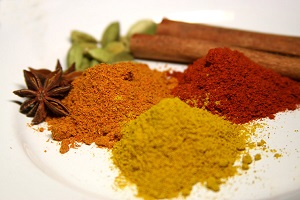If you want a leaner belly, burn this into your brain first: Eat breakfast!
Many people make fat loss out to be super complicated.
You definitely want a multi-pronged approach (like combining smart exercise and clean eating) to whittle down your belly, but really simple concepts practiced persistently are what pay off over time.
One of the easiest things you can do to start melting the fat off your frame is to start eating a breakfast EVERY DAY that boosts your metabolism and sets the tone for fat loss all day long.
Perhaps you’re nodding your head in agreement with me, but saying something like, “That’s great. I know that. But what the heck do I eat?”
Glad you asked 😉
Here are three simple fat fighting breakfasts from my colleague, Registered Dietitian, Jayson Hunter:
1- Cottage cheese mixed with real fruit
2- Hard boiled egg and yogurt mixed with real fruit
3- 2 pieces of fruit and a scrambled egg wrap
Seriously, would that be so hard? There’s protein and fresh produce in every example there. And very little prep/cooking time ;-). I bet you can manage these in the morning.
Well, if you can’t Jayson, who is the Head of R & D at Jaylab Pro, has another suggestion. You can use a nutritious meal replacement shake like Lean. Blend it up with ice and the liquid of your choice and you’ve got a meal replacement that has been perfectly formulated with the right amount of protein, fats, carbohydrates and fiber.
I use it myself and find it really has a delicious chocolate flavor. In fact, I hear Jaylab Pro spent 6 months developing Lean just to get the taste right.
If you want to check out Lean, go here: JayLabPro Lean
Ok, so there you have it — 4 EASY options for a Belly Fat Blasting Breakfast. Enjoy!
Yours in health,
Becky
PS – Here are 51 other recipes that you can try — with many of them being desserts. YUMMMM!!
Protein Packed Recipes >> Protein Packed Recipes


 For breakfast, lunch or dinner, quinoa is a healthy option to add to your diet. Quinoa is a seed grain that has been cultivated in the Andean region for over 7,000 years and was considered sacred by the Inca Empire. It was later replaced almost completely by cereals such as barley, wheat and corn.
For breakfast, lunch or dinner, quinoa is a healthy option to add to your diet. Quinoa is a seed grain that has been cultivated in the Andean region for over 7,000 years and was considered sacred by the Inca Empire. It was later replaced almost completely by cereals such as barley, wheat and corn. Healthy eating doesn’t have to be boring or bland. You just need to get familiar with the vast selection of herbs and spices available to you!
Healthy eating doesn’t have to be boring or bland. You just need to get familiar with the vast selection of herbs and spices available to you!

